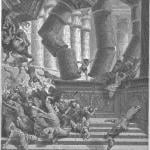
One of the greatest minds of the twentieth century was that of the English mathematician and philosopher Alfred North Whitehead (1861-1947). Whitehead began his career with a primary focus on mathematics, logic, and physics, for which the greatest evidence is the famous three-volume Principia Mathematica, published between 1910 and 1913, which he wrote with a former student of his by the name of Bertrand Russell. Somewhat before 1920, Whitehead’s interests began to shift to the philosophy of science and then to metaphysics. After teaching mathematics at Cambridge University and, subsequently, at both University College and Imperial College, London, he accepted an appointment in 1924, at sixty-three years of age, as a professor of philosophy at Harvard University, where he spent the quite productive remainder of his life. He is generally credited as the pivotal and founding figure in the school of thought known as “process philosophy.”
Here’s something striking that Alfred North Whitehead had to say:
Skeptics and believers are all alike. At this moment scientists and skeptics are the leading dogmatists. Advance in detail is admitted: fundamental novelty is barred. This dogmatic common sense is the death of philosophical adventure. The universe is vast.
***
The notes below come from Pim van Lommel, Consciousness Beyond Life: The Science of the Near-Death Experience (New York: HarperCollins, 2010):
All studies identify a link between age and the number of reported NDEs. The younger the patient, the greater the chance of an NDE report. Melvin Morse found a percentage of 67 percent in children. In his study, Kenneth Ring found that 48 percent of all patients, with a mean age of thirty-seven, reported an NDE. Cardiologist Michael Sabom found that 43 percent of his patients, with a mean age of forty-nine, remembered an NDE. It must be mentioned here that Sabom’s study included mostly cardiac arrest patients, which is comparable to prospective studies among heart patients with a higher mean age and fewer reported NDEs. In the retrospective NDE studies the life-threatening crisis was rarely caused by a cardiac arrest and the patients were younger. These retrospective studies found a high percentage of NDEs at a mean age of twenty-two to thirty-two. Greyson and Ring also found more frequent NDEs, and more frequent deep NDEs, at a younger age. The Dutch study, in which the average age of patients was sixty-three, also found evidence of more frequent NDE reports below the age of sixty. (109-110)











